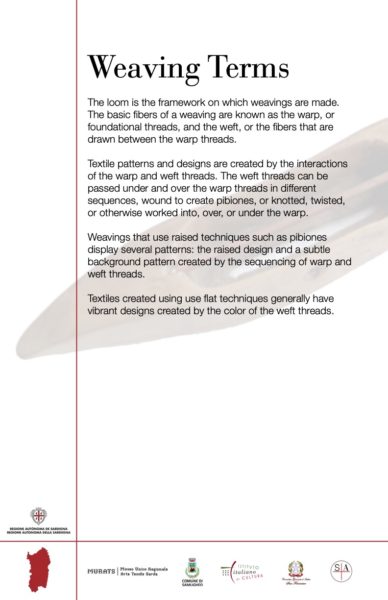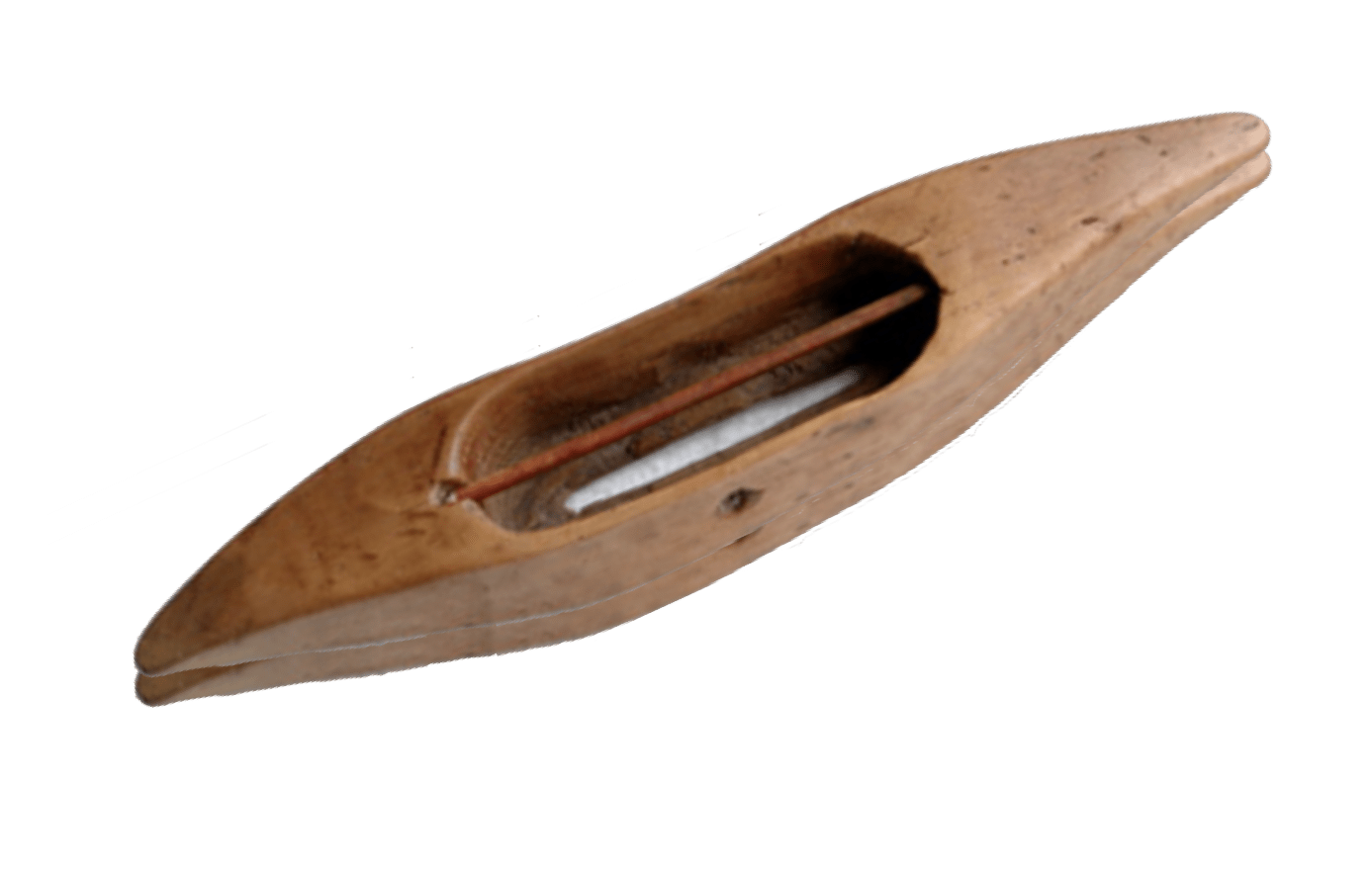This is one of the educational posters from Sardinian Textiles: An Exhibit of Handwoven Art, held at the Italian Cultural Center – San Francisco in 2017. The text is first, followed by the poster.
There’s certainly much more to discuss about this topic — and I expand greatly on this during my live presentations and in articles you’ll find on this site and elsewhere. Sign up for the newsletter to stay connected!
The loom is the framework on which weavings are made. The basic fibers of a weaving are known as the warp, or foundational threads, and the weft, or the fibers that are drawn between the warp threads.
Textile patterns and designs are created by the interactions of the warp and weft threads. The weft threads can be passed under and over the warp threads in different sequences, wound to create pibiones, or knotted, twisted, or otherwise worked into, over, or under the warp.
Weavings that use raised techniques such as pibiones display several patterns: the raised design and a subtle background pattern created by the sequencing of warp and weft threads.
Textiles created using use flat techniques generally have vibrant designs created by the color of the weft threads.

© 2013 – 2025 Kelly Manjula Koza | All Rights Reserved

